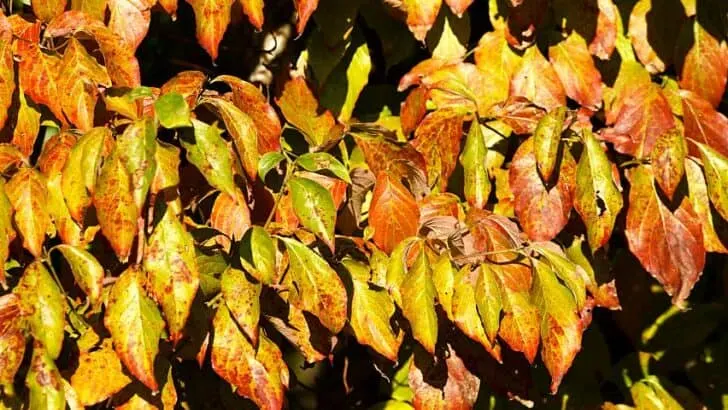There are more than 50 different species of dogwood trees according to Plantura Magazine, including the Flowering Dogwood and the Blackfruit Cornel.
Regardless of the type of dogwood, red leaves are a cause for concern. The issues that cause red leaves can be dangerous and even deadly based on my experience.
Thankfully, if you can figure out the source of the problem, you can take steps to protect your tree.
This is why I wrote this article to highlight the 3 most common causes why dogwood tree leaves turn red.
Table of Contents
Dogwood Tree Leaves Turning Red
Leaf scorch, fungal disease, and pest infestations can all turn dogwood tree leaves red. To find out what’s wrong with your dogwood tree, you’ll need to examine the leaves closely as telltale signs can help you to identify the source of your problem.
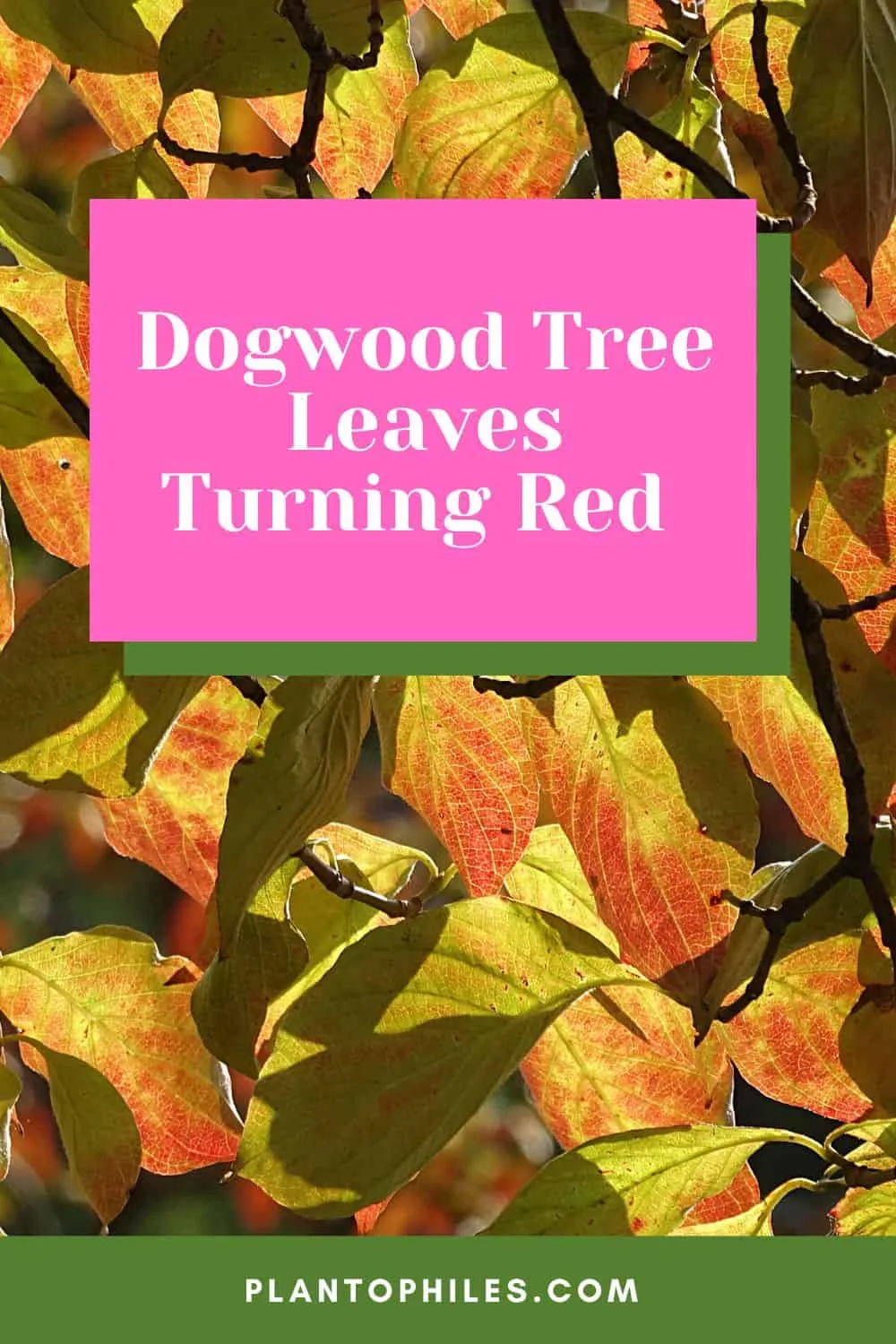
How to Tell What’s Making My Dogwood Tree Leaves Red
Red and brown leaves are a sign of leaf scorch. Scorched leaves also tend to be dry and brittle around the edges.
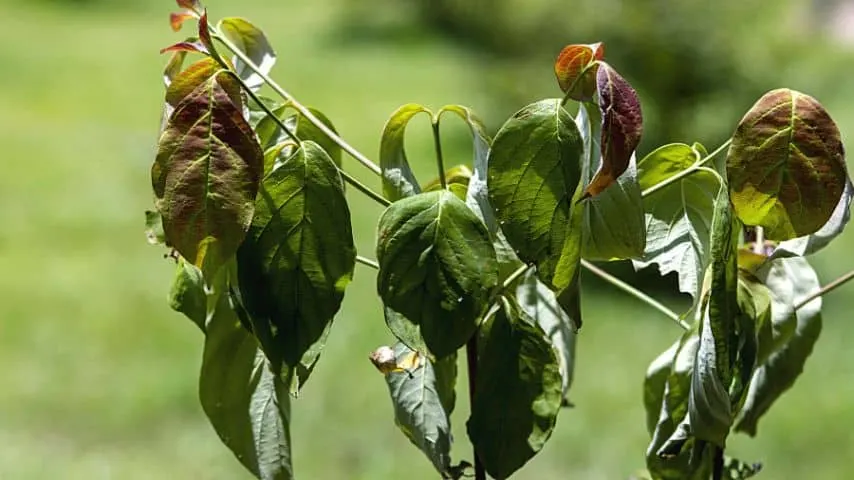
If the leaves are red with purple blotches around the edges, you’re probably dealing with a fungus. Fungal diseases can also cause leaves and flowers to fall from your tree.
Not only can pests make leaves look red, but they can damage your tree in other ways. For example, you may see sections of damaged bark or small bumps around the tree’s trunk.
How to Treat Leaf Scorch On a Dogwood Tree
When the weather is hot or dry, it can be difficult for the leaves on your dogwood tree to retain moisture. To prevent leaf scorch, you’ll want to ensure that your tree gets all the water it needs.
You shouldn’t overwater your dogwood, but you may want to give it more water during the summer. The soil around your tree should never be saturated with water, but you should try to keep it moist.
To help your tree retain water, place a light layer of loose bark mulch around the soil. Mulch can conserve water and keep the soil cool.
Read more about how to grow dogwood trees here.
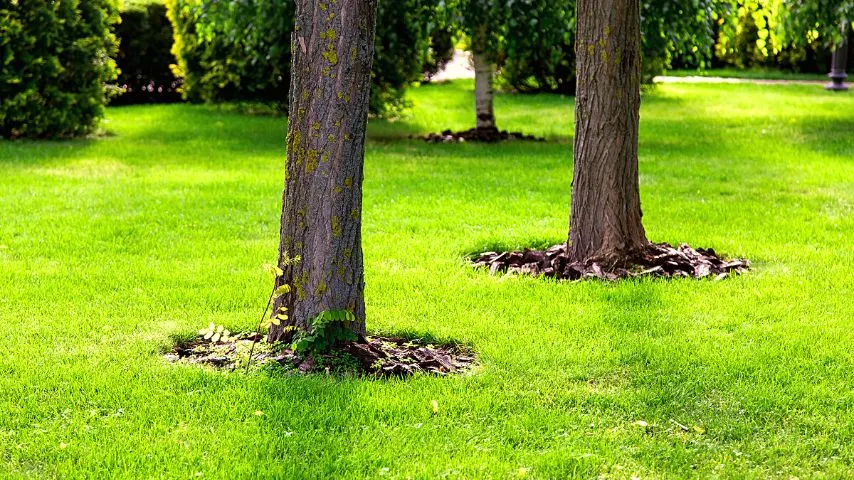
If your dogwood isn’t getting any shade during the day, you may also want to think about transplanting your tree.

While moving a tree can be a hassle, changing your tree’s location could help you avoid leaf scorch in the future.
How to Treat Fungus On a Dogwood Tree
The fungal disease called Anthracnose infects the leaves, branches, and trunks of dogwood trees. Trees are most likely to be infected during fall and spring when the weather is wet and cool.
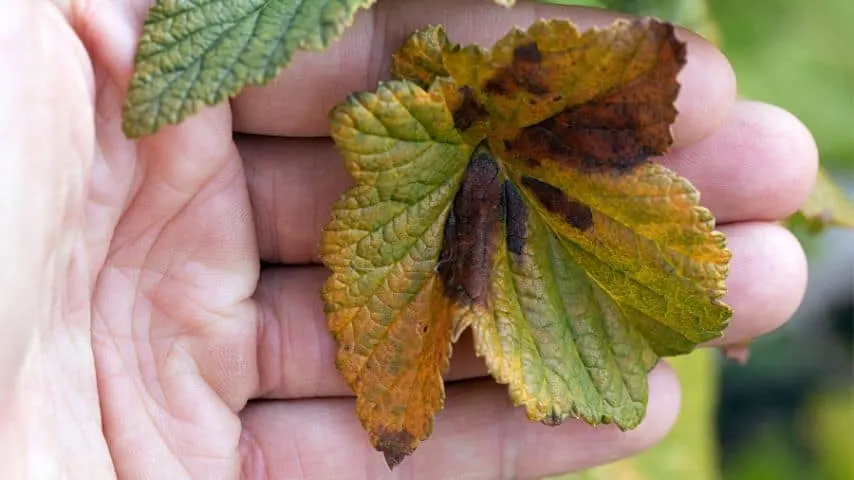
The fungus can spread quickly once a dogwood tree’s infected, especially when it rains. You should immediately remove red leaves and any other trees that show signs of disease.
In addition to removing leaves, you should prune twigs and branches that show signs of infection. Look for fungus spores or dark brown spots on the bark of your tree.
Healthy trees are more resistant to anthracnose. Mulch and fertilizer can strengthen and restore your tree, but it’s best to avoid high-nitrogen fertilizers.
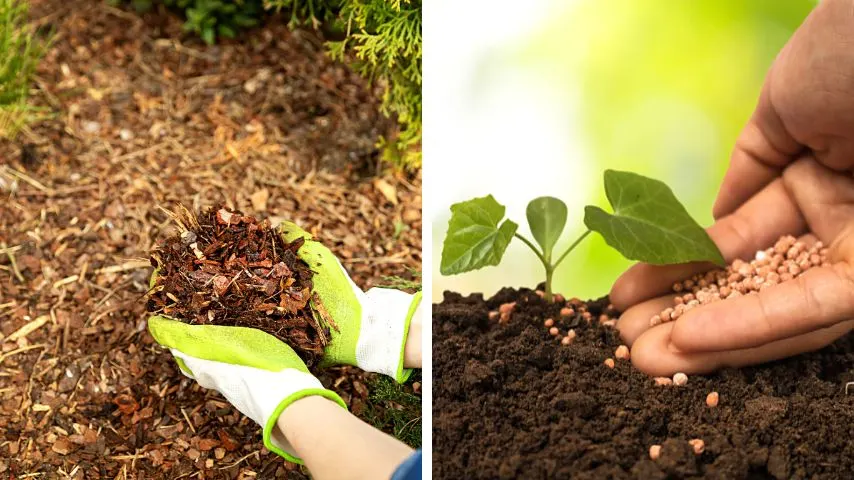
You can protect your tree and prevent additional fungal growth by applying a fungicide.
Fungicides can damage the leaves and blooms on flowering dogwoods, so it’s best to spray the fungicide along the base of the tree.
The Best Fungicides for Dogwood Trees
Baking soda is known to have antifungal properties and can even kill some fungus types.
To make a homemade fungicide with baking soda, mix 2 teaspoons of baking soda with a teaspoon of cooking oil and dish soap, and 8 cups water.
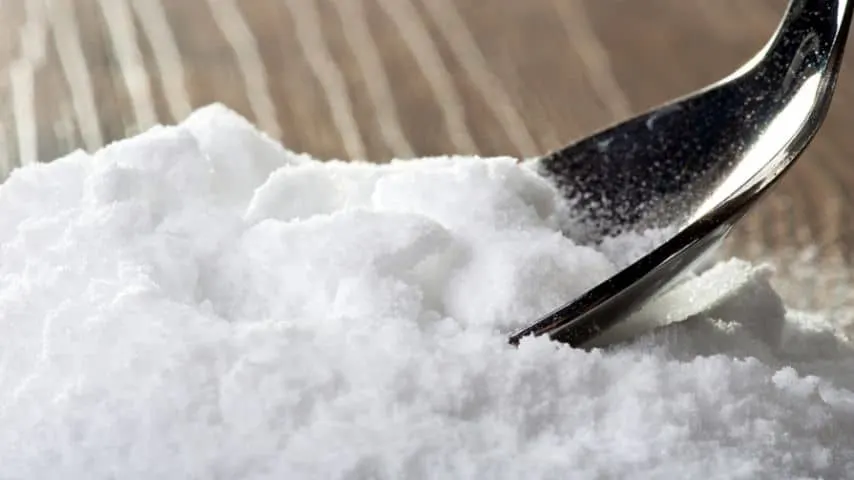
You can also make a Bordeaux mixture by combining copper sulfate with water and lime. This concoction can stick to plants in rainy weather, which makes it ideal for treating anthracnose.
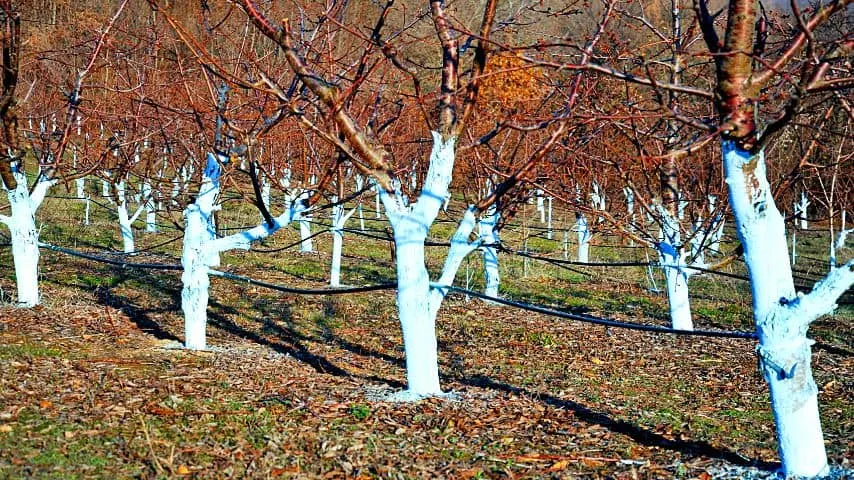
How to Protect My Dogwood Tree from Pests
There are several pests that can damage dogwood trees, including scales and the dogwood club-gall midge.
If your tree has red leaves, it’s likely that you’re dealing with a pest known as the dogwood borer.
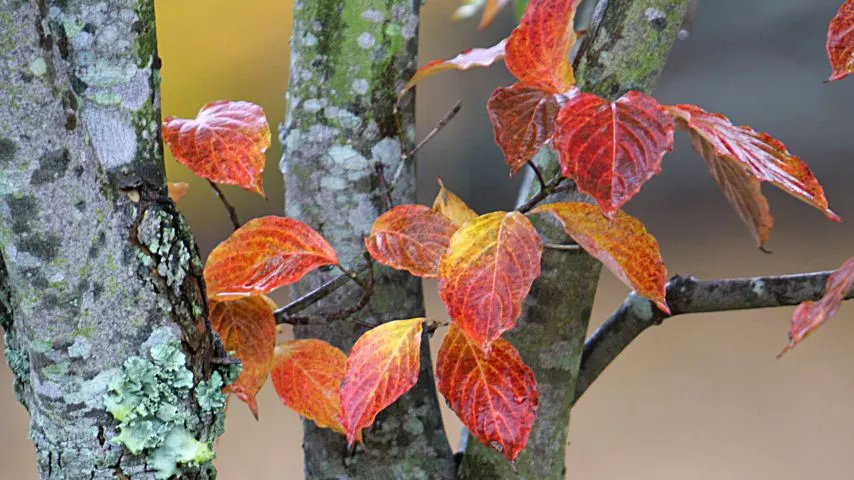
Dogwood borers are a type of moth that feeds on the wood and bark of ornamental trees like dogwood. These insects bore into the tree as they feed, causing serious damage.
If this pest has been plaguing your dogwood, you should examine your tree closely for signs of damage. Prune any branches that have been infested by borers so that they won’t be able to spread across the tree.
Pesticides can also be used to get rid of borers and keep them away from your tree. While chemical insecticides can be effective, natural pesticides can also give you great results.
The Best Natural Pesticides for Dogwood Trees
Neem oil, a natural insecticide that comes from the seeds of neem trees, can kill and repel borers. Mix it with warm water and dish soap for best result before spraying it on your tree.
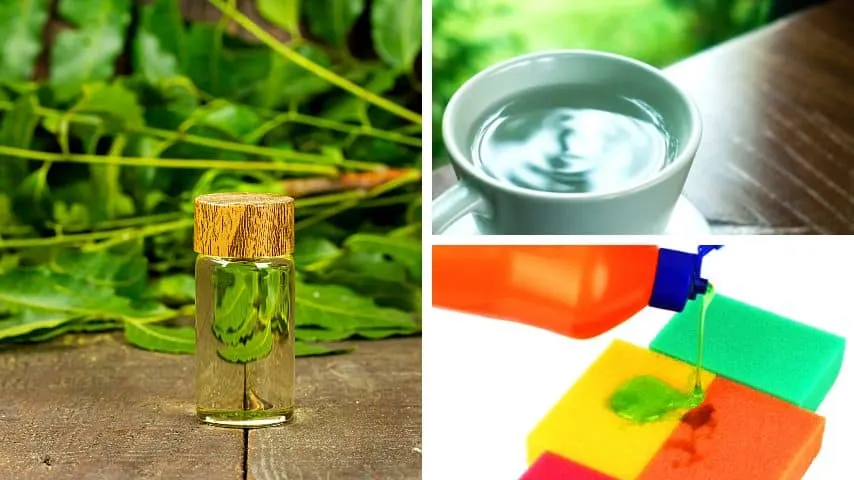
You can also make an insecticide from vegetable oil and dish soap. Combine the oil, soap, and water and spray the mixture on the bark of your tree twice each week.
Pyrethrin, a plant extract that comes from chrysanthemum flowers, is also fatal to borers. You can purchase pyrethrin spray at most garden stores.
What to Do to Protect Dogwood Trees
While it’s best to treat diseases, infestations, and other problems right away, you should also try to prevent damage to your dogwood.
Pay close attention to your tree so the care that it needs can be given.
Regular pruning can reduce the risk of insect infestations and can encourage new growth. Ideally, you should prune your dogwood in late autumn or early winter, when the tree is dormant.
You should also keep the ground around your tree clean and clear of weeds, leaves, and other types of debris.
Weeds can drain nutrients from the soil and can even damage the roots of your tree.
If your dogwood tree is dying and you want to try to save it, read this article next.
Frequently Asked Questions about Dogwood Tree Leaves Turning Red
Why Does My Dogwood Tree Have Curled Leaves?
It’s common for dogwood leaves to curl, especially during the summer. Curling helps to protect leaves from sun damage.
Why is My Dogwood Tree Experiencing Leaf Drop?
Pests and diseases can both cause leaf drops on dogwood trees. Trees may also lose leaves if they are overwatered.
Why Are My Dogwood Tree Leaves Yellow?
Leaf yellowing is usually a sign that your dogwood tree needs more iron. Leaves can also turn yellow or green when a tree is overwatered.
Conclusion On Dogwood Tree Leaves Turning Red
Dogwood tree leaves are turning red for the following reasons:
- Leaf scorch
- A fungal disease
- Pest infestations

Daniel has been a plant enthusiast for over 20 years. He owns hundreds of houseplants and prepares for the chili growing seasons yearly with great anticipation. His favorite plants are plant species in the Araceae family, such as Monstera, Philodendron, and Anthurium. He also loves gardening and is growing hot peppers, tomatoes, and many more vegetables.

